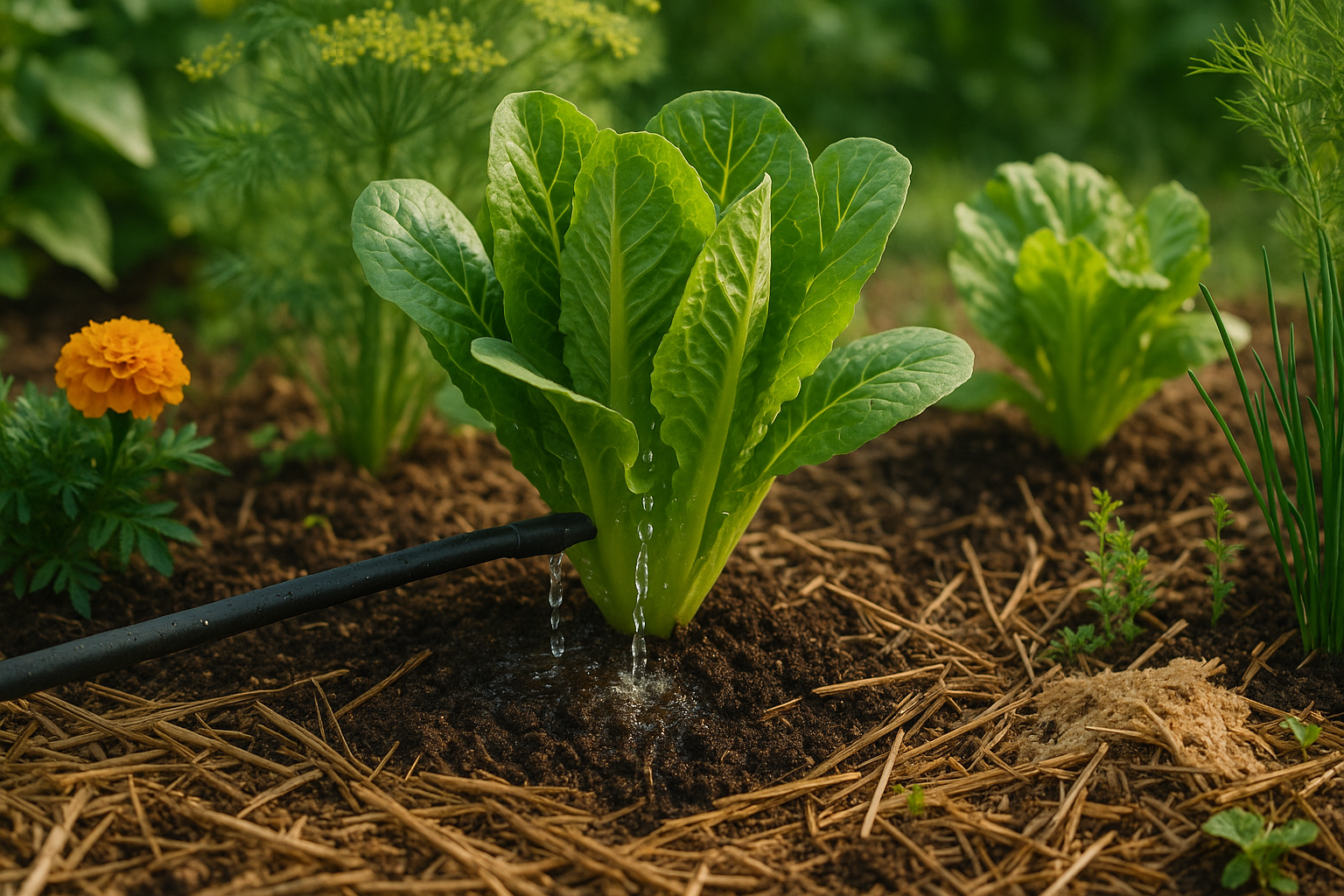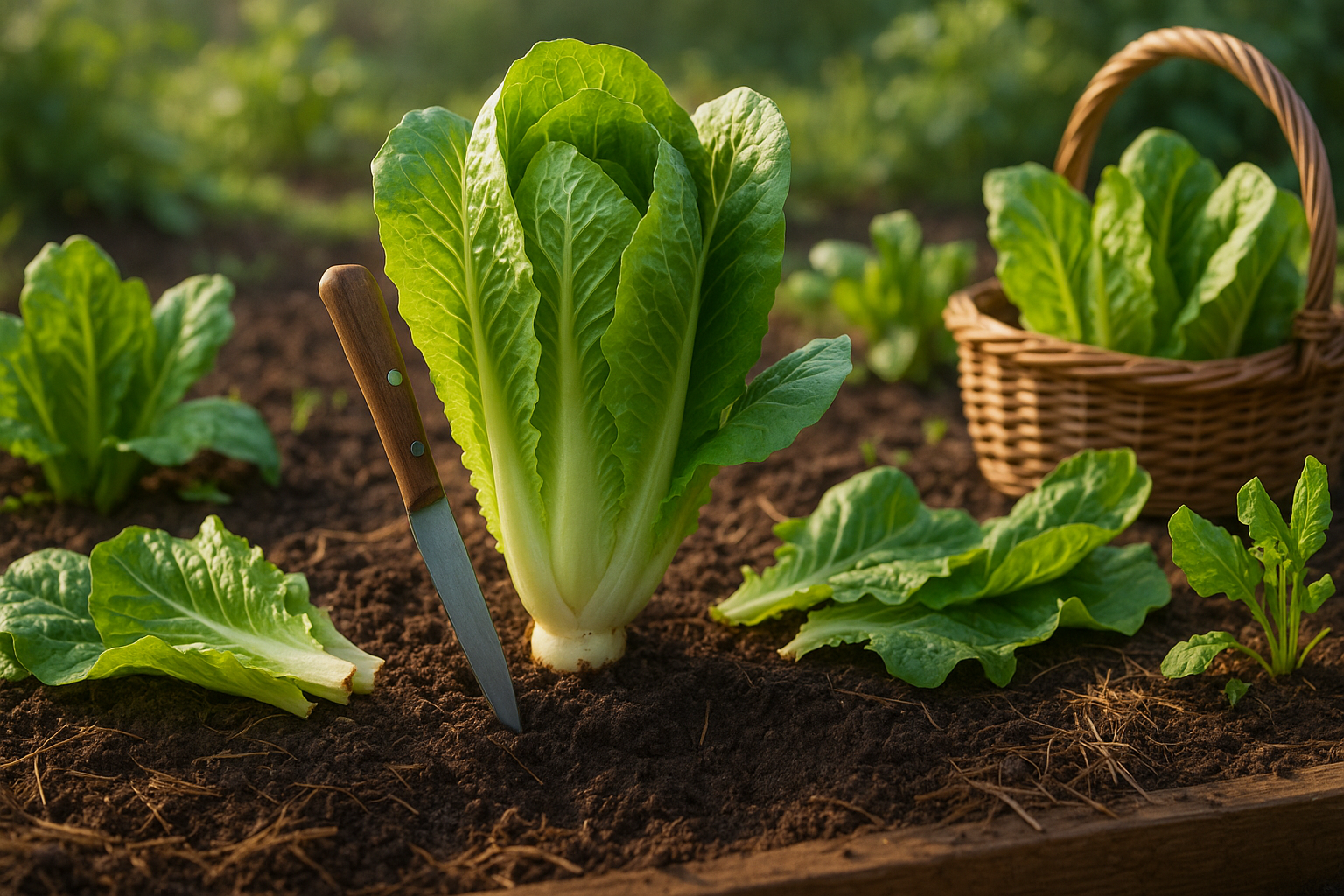Introduction to Romaine Lettuce & Its Appeal

Growing romaine lettuce is a fantastic choice for anyone wanting crisp, flavorful leafy greens straight from their backyard or balcony. In recent years, romaine lettuce has soared in popularity among home gardeners and outdoor enthusiasts alike, thanks to its versatility and ease of cultivation. Whether you have a spacious garden plot, a few raised beds, or just a handful of containers on your patio, romaine lettuce adapts beautifully to different growing conditions.
It’s the star ingredient in Caesar salads, a crunchy addition to sandwiches, and a nutritious base for wraps, packed with high levels of fiber, vitamins A and K, and antioxidants.
One of the biggest appeals of growing romaine lettuce yourself is the unbeatable freshness you get with every harvest—there’s simply nothing like the taste of leaves picked minutes before your meal. Beyond flavor, homegrown romaine helps you save on grocery bills and reduce waste, since you can cut just what you need and let the plant keep producing.
Its shallow root system and compact growth make it ideal for tight spaces and urban gardens. Plus, romaine is a forgiving crop that thrives with just a little basic care, making it perfect for both novice and seasoned gardeners.
In this easy-to-follow guide, you’ll discover straightforward steps to start growing romaine lettuce at home or outdoors, no matter your available space. Get ready to enjoy homegrown salads all season long while making the most of your gardening efforts, right from seed to table.
Choosing the Right Variety & Growing Method

When selecting the right romaine lettuce variety, consider your available space, flavor preferences, and how quickly you want a harvest. Popular options like Parris Island Cos are classic for their sweet crunch, upright heads, and adaptability, maturing in about 65-70 days. For faster harvests, Little Gem is a compact, mini romaine that’s tender and ready in as little as 50 days—perfect for tighter spaces or impatient gardeners. Some varieties, such as Cimarron, offer unique coloring with red-tinged leaves and a slightly earthier flavor, adding visual interest to salads and garden beds.
Starting Your Lettuce
When it comes to starting your lettuce, seeds are budget-friendly and provide the widest variety options, but require patience and some care during the early stages. Seedlings save time and reduce germination uncertainty, though they are often pricier and offer fewer varieties at nurseries. For a fun, zero-cost experiment, you can regrow romaine from kitchen scraps by placing the stem base in water and watching new leaves sprout—though growth is usually limited and best enjoyed as an educational project.
Choosing a Growing Location
Deciding where to grow your romaine depends on your climate and available space. Outdoor garden beds yield the highest quantity and largest heads if you have sun and mild temperatures. Containers—indoors or on patios—offer flexible placement and are easier to manage for beginners. Indoors, you may need extra lighting but can enjoy fresh lettuce year-round while avoiding pests.
Tips for Buying Seeds and Seedlings
- When buying seeds, look for reputable brands and check the package date to ensure high germination rates.
- If purchasing seedlings, select plants with vibrant green leaves and avoid those that look wilted or have brown edges, as this indicates poor health.
- Choosing disease-resistant varieties improves your chances of success, so check labels or descriptions for pest and disease tolerance suited to your area.
Planting Romaine Lettuce

Romaine lettuce thrives when planted in the cooler temperatures of early spring or fall, as hot weather can cause it to bolt and become bitter. In most regions, sow seeds directly in the garden two to four weeks before your last expected spring frost, or in late summer once the heat subsides for a fall crop.
If you live in a warmer climate, choose a spot with morning sun and light afternoon shade to protect the plants from intense heat. In cooler areas, full sun encourages strong, healthy growth.
Whether growing romaine in garden beds or containers, well-draining, fertile soil is essential. The soil should be rich in organic matter, like compost, with a pH around 6.0 to 6.8. Work compost or aged manure into the top 6–8 inches of soil and ensure proper drainage to prevent root rot. Raised beds or pots with drainage holes work well for this purpose.
To sow seeds directly, create shallow rows about ¼ inch deep and 12 inches apart. Gently sprinkle the seeds and cover them with fine soil. Keep the area consistently moist, and once sprouts appear, thin seedlings to 8–10 inches apart so each plant has enough space to grow.
Alternatively, start seeds indoors three to four weeks before the last frost by sowing them in seed trays filled with seed-starting mix. Transplant seedlings outdoors when they have two or three true leaves and daytime temperatures consistently reach 55°F to 65°F.
Whether you’re direct sowing or transplanting, mulch around the plants to retain moisture and suppress weeds. Water regularly to maintain even, consistent moisture, but avoid soggy soil.
By optimizing timing, light, and soil conditions, you’ll set your romaine lettuce up for crisp, delicious harvests.
Caring for Your Romaine

Keeping your romaine lettuce healthy starts with consistent watering. Romaine prefers soil that stays evenly moist, not soggy—aim for about one inch of water per week, adjusting for rainfall and heat. Drip irrigation or soaker hoses work well to deliver water directly to the roots without splashing the leaves, which helps prevent disease.
When it comes to feeding your plants, romaine thrives with a balanced fertilizer (such as 10-10-10) or well-rotted compost. Start by mixing fertilizer into the soil before planting, then top-dress around the base of the plants every three to four weeks throughout the growing season.
To maintain soil moisture and fend off weeds, spread a two-inch layer of organic mulch such as straw or shredded leaves around each plant. This also helps keep root temperatures cooler during hot spells.
Romaine can bolt or wilt in summer heat, so use lightweight shade cloths or row covers during severe midday sun, especially in warmer climates.
Protecting your crop from pests is equally important; slugs and aphids are the most common threats. Handpick slugs in the early morning and rinse aphids away with a strong stream of water.
For ongoing defense, try companion planting—flowers like marigolds attract beneficial insects, while herbs such as dill or chives can help deter pests. Physical barriers like floating row covers offer extra protection from both insects and birds without chemicals.
By keeping your romaine well-watered, well-fed, and shielded from heat and critters, you’ll set the stage for crisp, fresh harvests all season long.
Growing Tips & Troubleshooting Common Problems
To grow healthy lettuce, start by spacing your plants properly—ideally 6 to 12 inches apart, depending on the variety. This prevents overcrowding, giving each plant enough room for nutrient uptake and ample airflow, which significantly reduces the risk of fungal disease.
After seeds germinate, thin seedlings so they aren’t competing for light or space. If you notice seedlings growing too close, gently pull out the extras and use them as baby greens.
Proper air circulation is often overlooked but crucial. Avoid planting lettuce too densely and consider using raised beds or containers to improve air movement around the leaves.
Common issues, like bolting (when lettuce suddenly shoots upward and starts to flower), often happen if temperatures spike or the plants are stressed. To prevent this, try planting heat-tolerant varieties and keep the soil consistently moist.
If leaves turn yellow or spotty, this may signal overwatering, underfeeding, or fungal infection. Check soil moisture, try a balanced fertilizer if needed, remove affected leaves, and water at the base to avoid wetting the foliage.
For pests like aphids or slugs, inspect plants regularly and remove pests by hand, use insecticidal soap, or protect young lettuce with row covers.
Disease symptoms such as leaf spots or powdery mildew should be addressed immediately by removing affected leaves and avoiding overhead watering to prevent spread.
Crop rotation is a key preventive measure—avoid planting lettuce or other leafy greens in the same spot season after season. Rotating crops each year interrupts the life cycles of soil-borne diseases and pests that target lettuce, keeping your garden soil healthy and productive over time.
By following these steps, you’ll be better equipped to grow strong, resilient lettuce while minimizing setbacks.
Harvesting Romaine Lettuce for Maximum Yield

Knowing when and how to harvest romaine lettuce is key to enjoying crisp, flavorful greens all season long. For whole heads, wait until they are firm and about 6 to 8 inches tall—typically 60 to 75 days after planting. Use a sharp, clean knife to cut the head off at the base, leaving at least an inch of stem above the soil to encourage regrowth.
If you prefer to harvest individual leaves, start picking the outer leaves once they’re large enough to eat, being careful not to damage the center growth. This “cut and come again” method prolongs your harvest and keeps the plants productive, as new leaves continue to emerge from the center.
For ongoing harvests, visit your lettuce patch early in the morning when the leaves are crispest and full of water, giving you the best flavor and texture. Avoid midday harvesting, as heat can make the leaves wilt or taste bitter. Use clean scissors or garden shears for a gentle harvest—clean tools help prevent disease.
Be sure to check frequently, as lettuce matures quickly and can soon bolt in warm weather. Bolting happens when a tall flower stalk shoots up, signaling the plant has switched to seed production. While bolted lettuce is technically edible, the leaves turn bitter and tough, so it’s best to harvest before this stage if you want sweet, tender greens.
If some heads do bolt, you can still gather seeds for next season or feed the tougher leaves to backyard chickens or compost them. By timing your harvest and using gentle techniques, you’ll maximize yield and enjoy fresher, tastier romaine from your own garden.
Regrowing Romaine & Final Tips for Year-Round Lettuce
Regrowing romaine lettuce from store-bought stems is a simple, satisfying way to keep fresh greens on your table with minimal effort. Just cut your romaine head a few inches from the base, set the stem in a shallow bowl with about an inch of water, and place it on a sunny windowsill. Change the water every couple of days, and you’ll see new leaves sprouting within a week.
After a couple of weeks, you can transplant the regrown base into potting soil for continued growth.
Ensuring Year-Round Lettuce
To enjoy lettuce year-round, try succession planting: sow new seeds or start new bases every two to three weeks, so you always have a fresh crop coming in.
If you want to grow outdoors during cooler months, frost cloths or cold frames can protect your lettuce from chilly nights, helping you extend harvests well into fall and even winter in some climates.
Benefits of Homegrown Romaine
Homegrown romaine is not only fresher but also richer in vitamins A and K. It offers a crisp texture that’s perfect for quick salads, sandwiches, or rolling up your favorite fillings as lettuce wraps.
Growing your own greens can be incredibly rewarding—no more last-minute trips to the grocery store, and you’ll know exactly what went into your food.
Keep Learning
If you’re curious to keep learning, check out online gardening communities, local extension office guides, or beginner gardening books. With a bit of care and regular planting, you’ll enjoy fresh, homegrown lettuce all year long!
